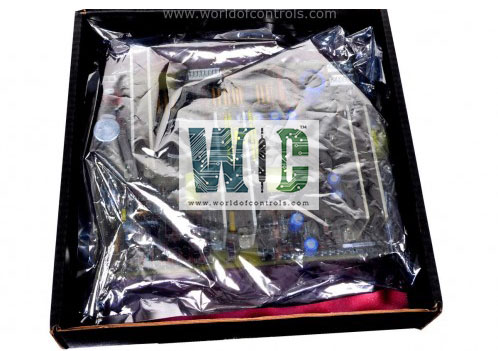SPECIFICATIONS
Part No.: IS230TRLY3EG01
Manufacturer: General Electric
Country of Manufacture: United States of America (USA)
Size 17.8 cm wide x 33.02 cm high
Temperature -30 to + 65oC
Maximum inrush current: 10 A
Contact material: Silver cad-oxide
Product Type: Relay Output Terminal Board
Availability: In Stock
Series: Mark VIe
Functional Description
IS230TRLY3EG01 is a Relay Output Terminal Board developed by GE. It is part of Mark VIe control system. The Relay Output with coil sensing terminal board is designed to accommodate 12 plug-in magnetic relays, each serving specific functions within the control system. These relays offer versatile functionality, with the first six relay circuits configurable via jumpers for either dry, Form-C contact outputs, or for driving external solenoids.
Features
- For powering field solenoids, users have the option to utilize a standard 125V DC or 115/230V AC source, or alternatively, an optional 24V DC source. The board is equipped with individual jumper-selectable fuses and on-board suppression, ensuring reliable and safe operation of the solenoids in various applications.
- In addition to the configurable relays, the board also features five unpowered isolated Form-C contacts from relays 7 to 11. These contacts offer versatility and can be used in various control and monitoring applications where isolation is required.
Fault detection
- Fault detection system within the Relay Output with coil sensing terminal board is designed to ensure the integrity and reliability of relay operations in the control system. It encompasses various mechanisms to detect and respond to potential faults, enhancing the overall safety and performance of the system.
- One crucial aspect of fault detection involves monitoring the excitation current of relay solenoids. Any loss of excitation current is promptly detected, triggering appropriate alarm signals and corrective actions to mitigate potential issues and prevent system malfunction.
- Additionally, the system continuously compares the actual coil current with the commanded values to identify any discrepancies. If there is a disagreement between the commanded and actual coil currents, it indicates a potential fault in the relay operation, prompting the system to take corrective measures to rectify the discrepancy.
- Another aspect of fault detection involves monitoring the connectivity and communication between the terminal board and the associated I/O board. Any unplugged cable or loss of communication is swiftly detected, leading to the de-energization of relays to prevent erroneous operations or unsafe conditions.
Configuration
- Jumpers JP1 through JP12: These jumpers are utilized to enable contact voltage sensing for selected relays if necessary. By inserting jumpers for the desired relays, contact voltage sensing functionality can be activated, allowing for the monitoring of voltage levels across relay contacts as part of the operational setup.
- Fuses FU1 through FU12: The fuses on the board play a crucial role in providing power to the relays, particularly relays 1 through 6. To supply power to these relays, two fuses should be placed in each power circuit dedicated to the corresponding relays. For instance, relays 1 and 7 are supplied power by fuses FU1 and FU7, respectively. Detailed information regarding fuse placement and circuit configurations can be found in the terminal board wiring diagram for comprehensive guidance during the configuration process.
The WOC team is always available to help you with your Mark VIe requirements. For more information, please contact WOC.
Frequently Asked Questions
What is IS230TRLY3EG01?
It is a relay output terminal board developed by GE under the Mark VIe series.
How is the relay operation monitored in the system?
The output of each relay, specifically the coil current, undergoes continuous monitoring. It is checked against the command at the frame rate. If there is a lack of agreement between the relay's operation and the command for two consecutive checks, an alarm is triggered and latched, signaling a discrepancy that requires attention.
How is the solenoid excitation voltage monitored in the system?
The solenoid excitation voltage is continuously monitored downstream of the fuses. If the voltage falls below 12 V dc, an alarm is triggered and latched, indicating a potential issue with the solenoid excitation that requires attention.
